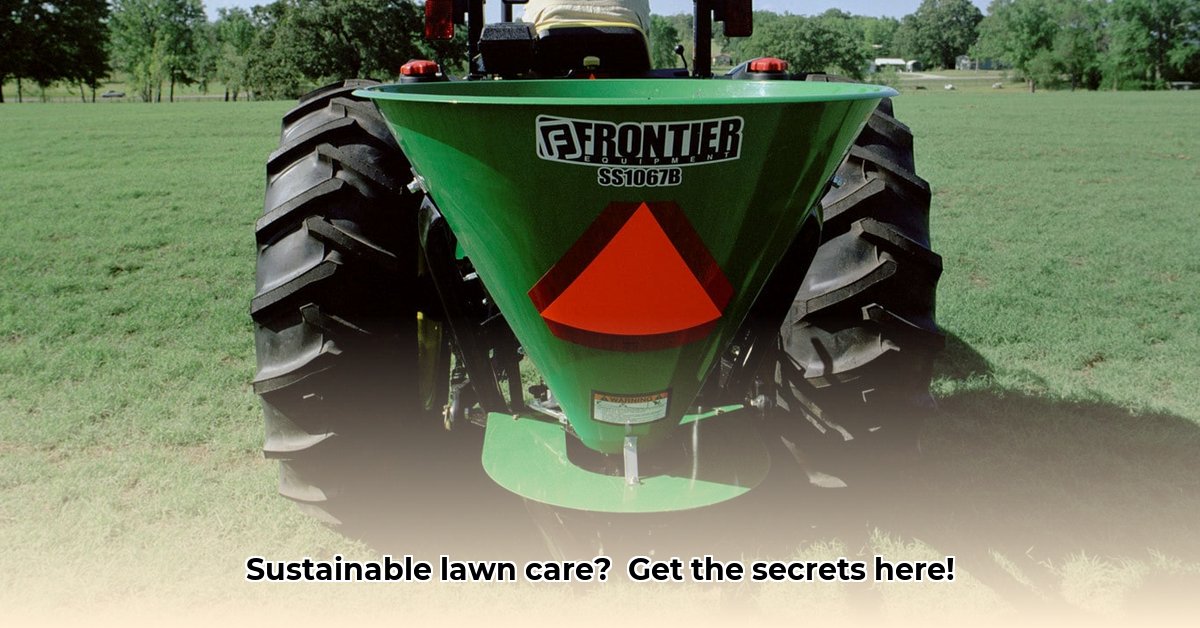
Lawn Tractor Seed Spreaders: Your Path to a Lush, Eco-Friendly Lawn
Achieving a vibrant, healthy lawn doesn't necessitate excessive resource consumption or environmental harm. Lawn tractor seed spreaders offer a surprisingly effective pathway to precision seeding and sustainable lawn care. This isn't merely about aesthetics; it's about responsible land management and resource conservation. By optimizing seed distribution, you can significantly reduce waste and enhance the overall health of your lawn. For more information on spreaders, check out this helpful resource: Learn More.
Understanding Your Seed Spreading Options: A Closer Look
Lawn tractor seed spreaders come in various types, each suited for specific needs and lawn characteristics. Choosing the right one depends on factors like lawn size, terrain, and desired level of precision.
Broadcast Spreaders: These scatter seed widely, ideal for large, relatively flat lawns. Think of them as the "shotgun" approach, covering a large area quickly. Though efficient for speed, they may lead to seed wastage on uneven terrain.
Drop Spreaders: These offer more targeted seeding, releasing seed in a narrow band. Perfect for smaller lawns, uneven terrain, or when precise placement is crucial. Imagine this as the "paintbrush" technique—applying seed exactly where needed, minimizing waste.
Spinner Spreaders: These utilize centrifugal force for seed dispersal, striking a balance between broadcast and drop spreaders. They are a good option for medium-sized lawns with relatively even terrain. However, their suitability varies depending on seed type.
Here's a comparison table to aid your decision-making:
| Spreader Type | Best Suited For | Pros | Cons |
|---|---|---|---|
| Broadcast Spreader | Large, flat lawns | Fast, covers large areas quickly, simple to operate | Less precise, potential for seed wastage |
| Drop Spreader | Smaller lawns, uneven terrain, targeted seeding | More precise, minimizes seed waste | Slower coverage, requires multiple passes |
| Spinner Spreader | Medium-sized lawns, relatively level terrain | Relatively even distribution, good balance of speed & precision | Might not be suitable for all seed types, moderate cost |
Selecting the Right Spreader: Factors to Consider
Choosing the ideal spreader involves careful consideration of several factors. Your budget is a primary concern, along with lawn size (a small spreader is unsuitable for large areas). Precision requirements also play a key role – a uniformly perfect lawn demands more precision than a naturally rustic appearance. Finally, ease of use is vital; some spreaders are simpler to operate and maintain. Isn't it time you had a beautiful lawn that's also good for the planet?
Mastering Your Seed Spreader: A Step-by-Step Guide
Effective seed spreading involves more than simply scattering seeds. Follow these steps for optimal results:
Preparation: Clear your lawn of debris (rocks, sticks) and mow it short for optimal seed-to-soil contact. This ensures proper germination and growth.
Calibration: Accurately calibrate your spreader according to the manufacturer's instructions. This critical step ensures even seed distribution and minimizes waste. Think of it as tuning a musical instrument—precision is key to a successful performance!
Spreading: Overlap passes for uniform coverage. Maintain a consistent speed to avoid uneven seeding. Consistent speed ensures even distribution and prevents clumping.
Maintenance: Clean the spreader thoroughly after each use. This prevents clogging and ensures longevity. A well-maintained spreader means fewer problems and greater longevity.
Sustainable Lawn Care: Making a Positive Impact
Employing a lawn tractor seed spreader directly supports sustainable lawn care. Precision seeding minimizes seed waste, saving money and resources while reducing your environmental footprint. Although not a complete solution for all sustainable farming challenges, it represents a highly significant improvement over traditional methods.
Precision Seeding: From Lawn to Farm
The principles of precision and efficiency employed in lawn care extend to larger-scale agricultural practices. Precision agriculture aims to optimize resource use and minimize waste, whether dealing with a small lawn or a vast field. The scale might differ, but the core philosophy remains consistent: maximizing yield while minimizing environmental impact.
The Future of Sustainable Lawn Care
Ongoing research is continually exploring innovative methods for precision seeding and sustainable agriculture. While existing technologies provide significant improvements over traditional approaches, ongoing advancements promise even more efficient and eco-friendly solutions in the years to come.